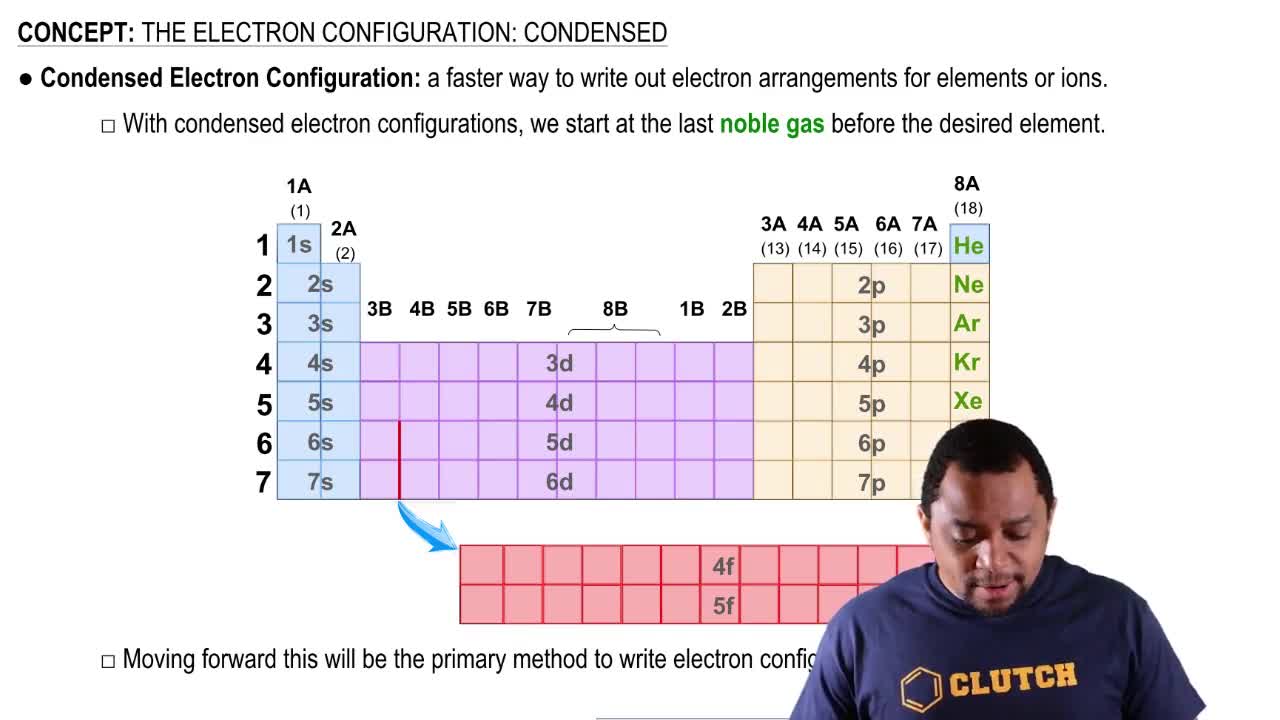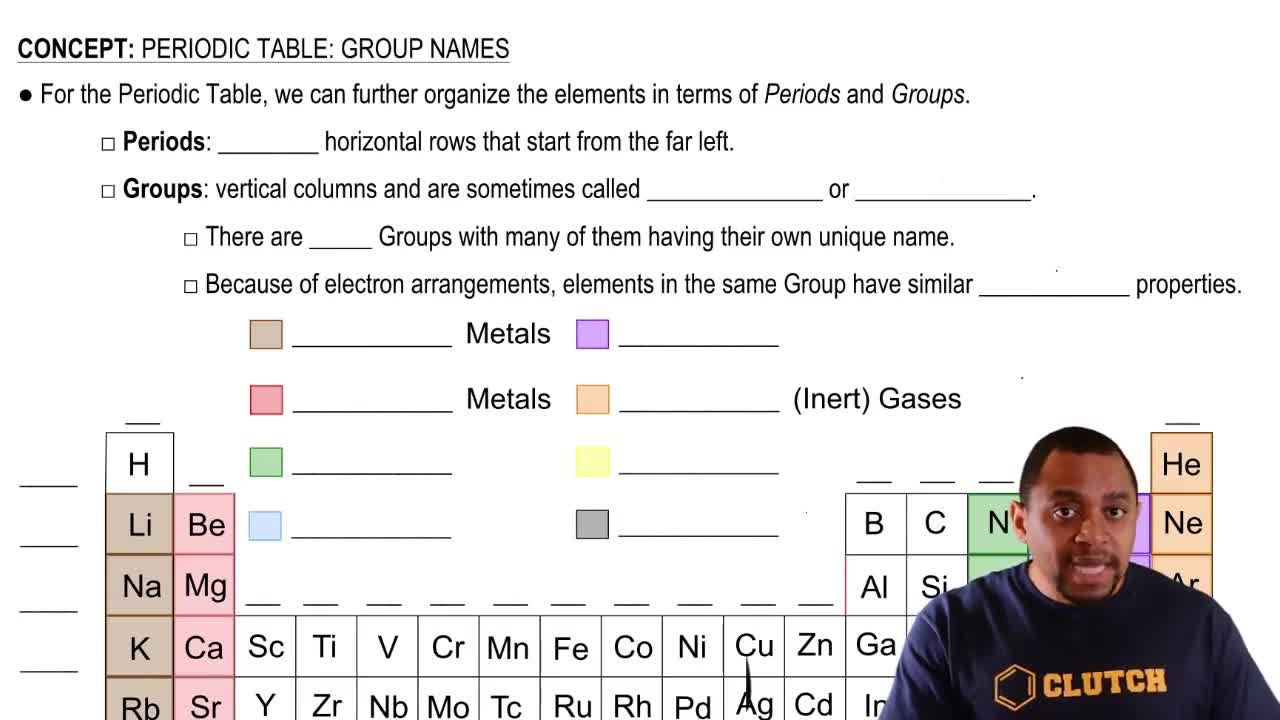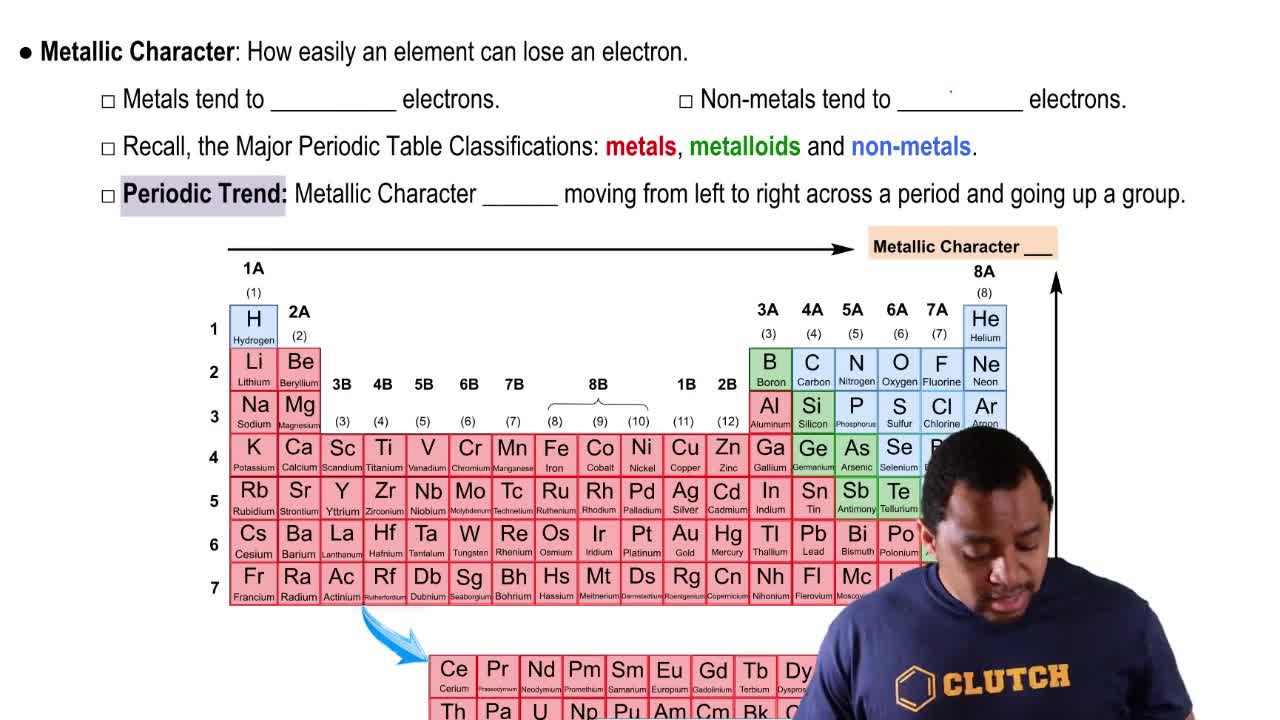Textbook Question
For chlorine, identify the group number, give the number of electrons in each occupied shell, and write its valence-shell configuration.
 Verified step by step guidance
Verified step by step guidance Verified video answer for a similar problem:
Verified video answer for a similar problem:



 0:54m
0:54mMaster Electron Arrangements Concept 1 with a bite sized video explanation from Jules
Start learning